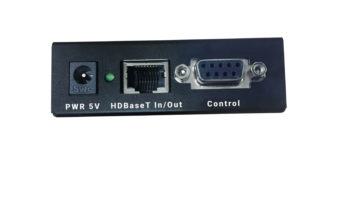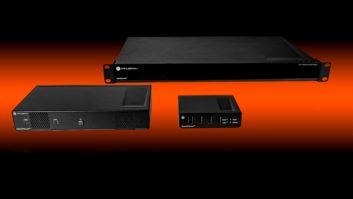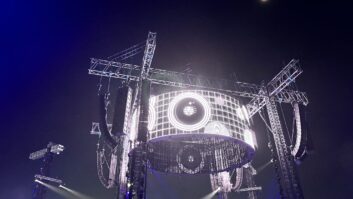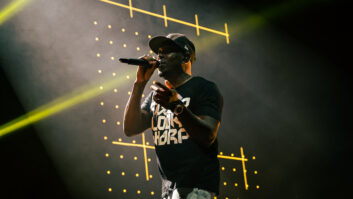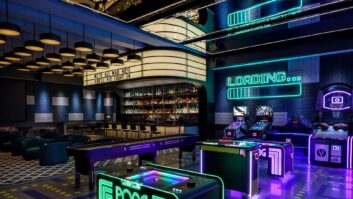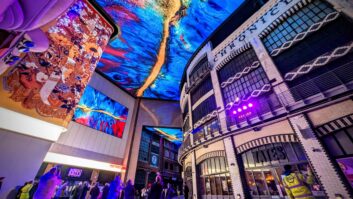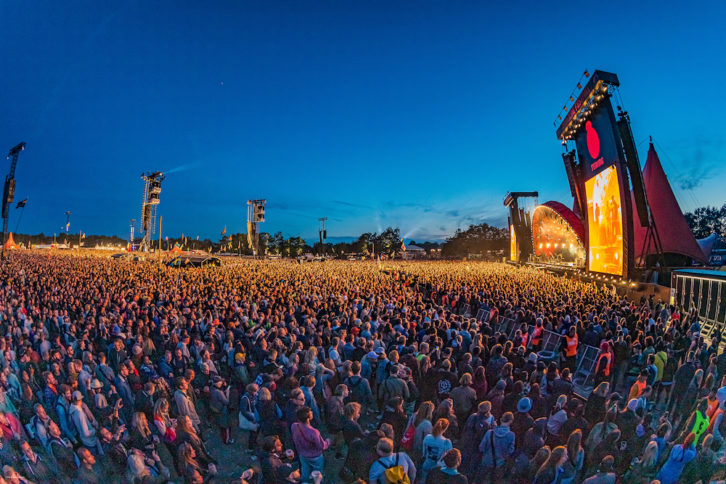
This June, Meyer Sound returned to Denmark as the exclusive sound provider for the Roskilde Festival, Northern Europe’s largest and longest-running music festival.
The event marked the second year of a five-year partnership that aims to leverage the strengths of the music festival and the supplier of professional audio systems to elevate the festival experience for artists, fans, and technology providers.
The Roskilde Festival, now in its 49th year, is massive in scale: This year’s events took place over eight days from June 29th through July 6th and showcased nearly 180 acts on eight stages — from big-name headliners: Cardi B, Bob Dylan, Travis Scott, Janelle Monáe, Robert Plant, and Wu-Tang Clan to Scandinavian superstars Robyn and MØ, to emerging regional artists, performing to daily crowds topping 130,000.
The partnership with Meyer Sound is a year-round collaboration focusing on education initiatives, R&D, and large-scale festival management. For partners steeped in common traditions of creativity and innovation, this multifaceted approach provides an unprecedented opportunity to innovate and inform, with the event serving as both a technology showcase and a living laboratory where research efforts focus on sound propagation and management techniques.
With a total area stretching more than 2,500,000sqm — the equivalent of 350 football fields — there’s a lot of ground to cover at Roskilde, and a lot of potential cross-talk between stages that needs to be controlled. Nearly 1,000 Meyer Sound loudspeakers, supplied by leading European AVL integrator Bright Group, were deployed across all festival stages and performance spaces, from the 1,000-capacity Gloria stage to the Orange main stage, with its 60,000 capacity.
LEO Family systems provided solutions for the event, thanks to their clarity, linearity, reliability, and ease of use. “The LEO Family was developed to create an idea that linear theory applied to systems like these would mean that you could do a variety of stages with different kinds and sizes of equipment and keep the same sound,” said Meyer Sound president and CEO John Meyer. “This allows people to understand you don’t have to run it so loud all the time. What we’re trying to show here is that the sound system should be transparent.”
The Roskilde stages were powered by the entire LEO Family, including LINA, LEOPARD, LEO and LYON arrays and 750-LFC, 900-LFC, and 1100-LFC low-frequency control elements, with VLFC very low-frequency control elements adding bone-shaking low-end impact. Numerous point source loudspeakers including UPA-1P and the brand-new ULTRA-X40 — which was also used as main field monitors at FOH — provided delay and frontfill support, while MJF-210s served as stage monitors. Network processing was handled by Galileo GALAXY processors.
Technical teams from Meyer Sound, Bright, and the Roskilde Festival collaborated on sound system design and deployment, drawing from previous successes to improve overall performance. This year, advancements ranged from enhanced AVB control to inventive new PA configurations. “All the lessons learned from 2018, we’ve taken directly into 2019,” stated Roskilde production head Lars Liliengren. “We are actually kicking off at a much higher level, even from the beginning.”
Other new tech initiatives included implementing an innovative subwoofer array at the Orange stage and significantly reducing leakage at Gloria. “We were able to apply our learnings from last year to make meaningful strides going into year two. Last year, we had the normal end-fire subwoofer array flown,” said Dennis Tholema, Meyer Sound senior technical European support. “This year, it’s a gradient end-fired subwoofer array, which is upward-staggered and down-steered to be able to get the maximum cancellation on the stage and backstage, which was the wish of festival production. We achieved a reduction of around 17dB. So it was very, very quiet onstage. At Gloria, we used gradient setups of two band-limited UPQ-1Ps behind each line array to reduce low-mid and low-end leakage from the arrays on stage.”
Ensuring a seamless festival experience for visiting engineers starts with providing personalised support onsite. To that end, Meyer Sound embedded a crew of 22, working alongside 32 Roskilde sound staff members, to work hand in hand with artists’ technical teams throughout the event.
“It’s really good to know when you’re coming into a situation like this that you are coming in to familiar situation with Meyer Sound and Meyer Sound technicians,” explained Icelandic engineer Ingvar Jónsson, who mixed front-of-house for Robyn. “A real comfort is to know the system and know that you have well-trained technicians who take good care of you.”
And for these engineers, encountering a premium sound system makes their work go even more smoothly. “Festivals are always tough in that you’re faced with so little time; you’re faced with a fast changeover,” said Penelope Isles’ FOH engineer Max Jacomb. “But the thing that overrides that for me is the fact that with a Meyer Sound system, there’s just more room to manoeuvre.”


